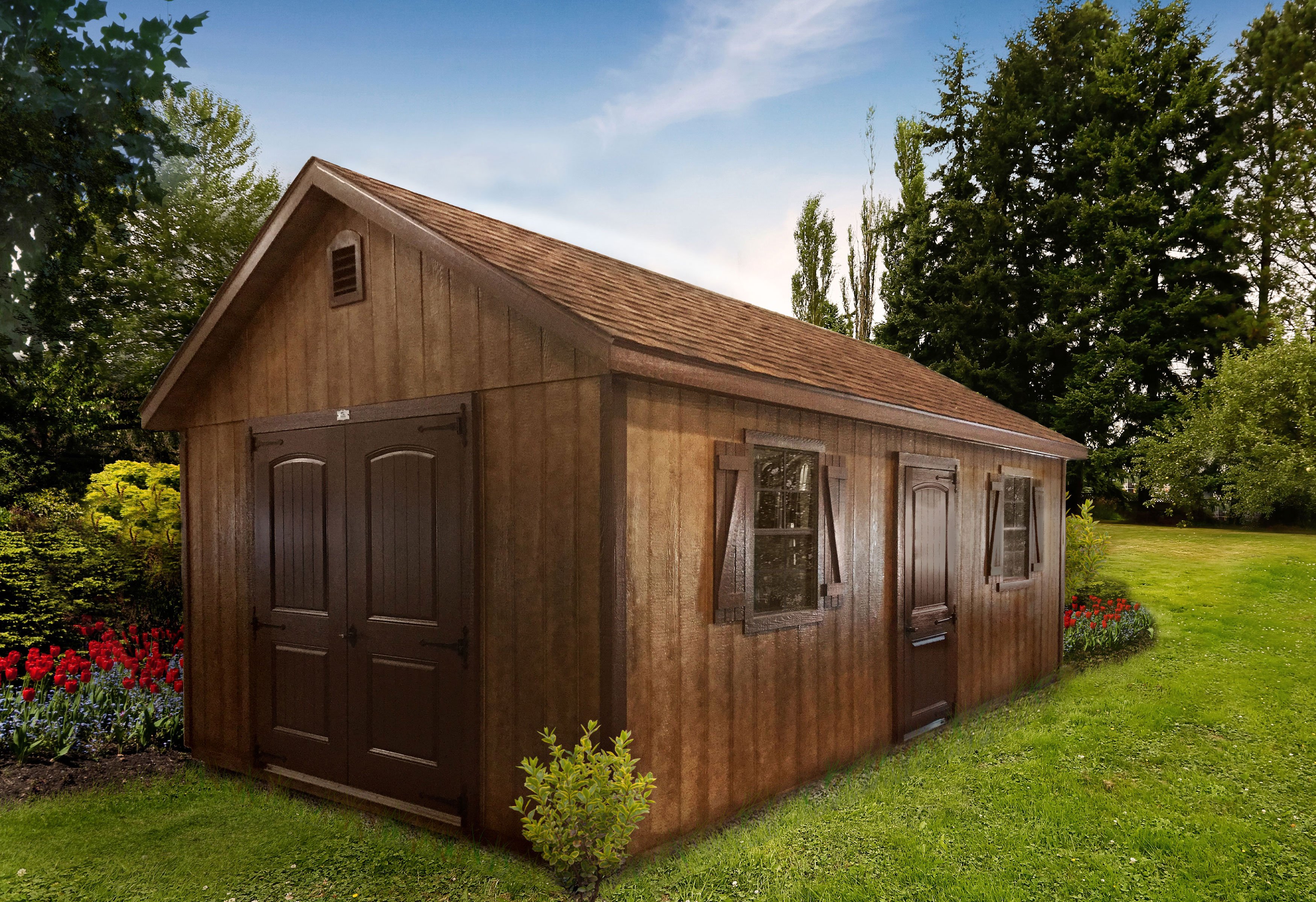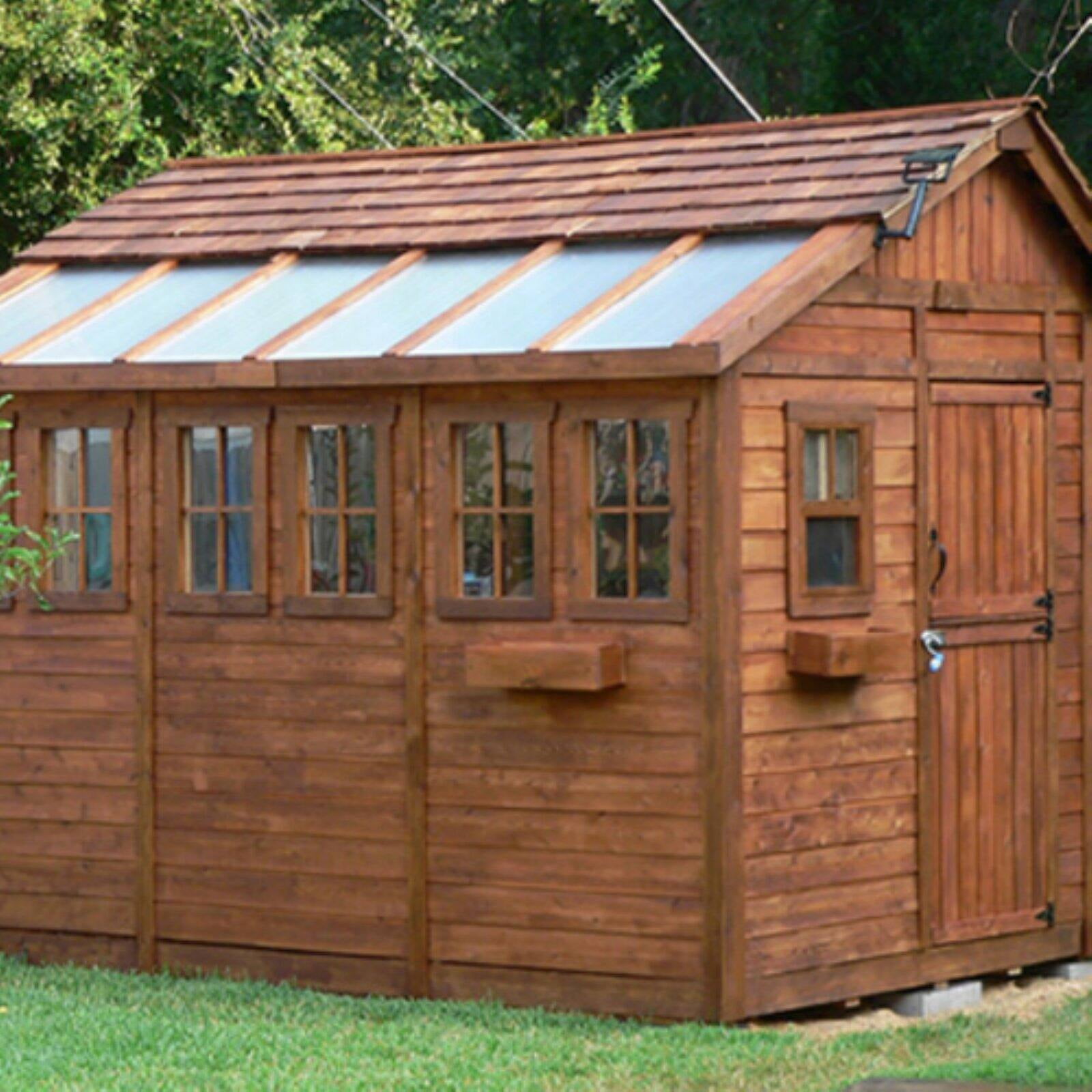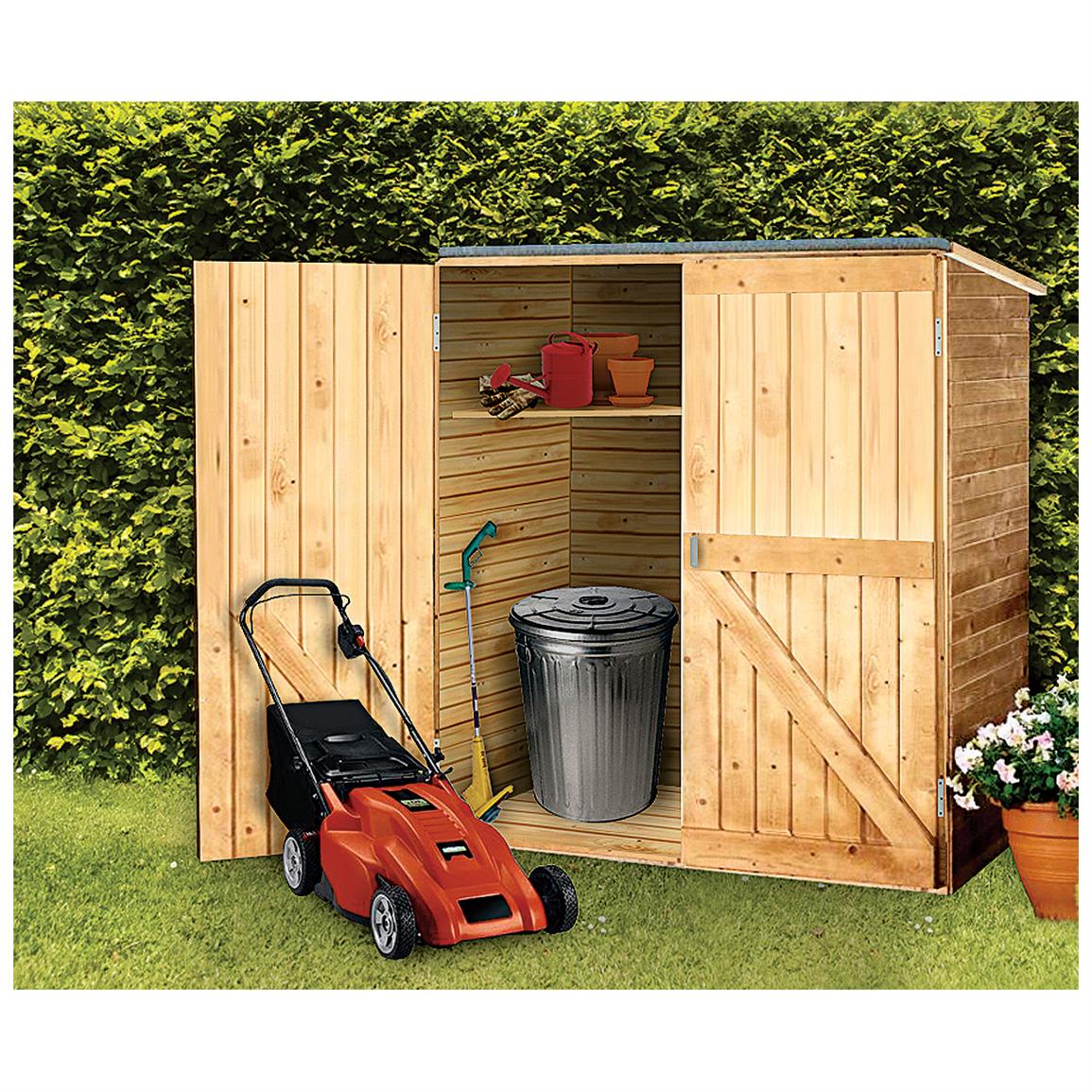How do outdoor storage structures enhance property organization and value? A comprehensive look at the benefits of these structures.
Outdoor storage structures, often constructed of wood, metal, or composite materials, provide designated spaces for storing various items. These structures can range from small, simple sheds to larger, more complex structures. Examples include garden tools, lawn equipment, firewood, and seasonal items. Properly sized and positioned, these structures not only protect stored items from the elements but also contribute to a more organized and attractive outdoor space.
The benefits of these structures extend beyond mere organization. Well-maintained storage solutions can significantly enhance a property's curb appeal, promoting a sense of order and tidiness. They protect valuable equipment from damage caused by weather and pests, increasing longevity. This, in turn, reduces the need for costly replacements, leading to a higher overall property value. Moreover, segregating outdoor storage allows for a more functional and usable outdoor area, freeing up space for leisure activities or landscaping.
- Where Is Nick Valentine A Guide For Fallout 4 Players
- Discovering The Closest Beach To Atlanta Ga A Coastal Getaway Awaits
Moving forward, this article will delve into the various types of outdoor storage structures available, covering aspects like material selection, size considerations, and integration with existing landscaping features. It will also discuss factors to consider when choosing a suitable structure, such as budget, desired storage capacity, and local regulations.
Sheds Outdoor Storage
Effective outdoor storage solutions are crucial for maintaining order and maximizing property value. Proper selection and implementation are paramount for both functional and aesthetic outcomes.
- Durability
- Size
- Protection
- Accessibility
- Integration
- Maintenance
Durability ensures longevity and resists environmental factors. Size considerations must align with storage needs, avoiding overcrowding. Protection from weather and pests is essential for preserving stored items. Easy access is crucial for practicality. Integration with the existing landscape enhances aesthetics, while regular maintenance safeguards structural integrity and longevity. For instance, a durable shed of appropriate size, offering adequate protection, and strategically integrated into a garden, ensures long-term practicality and value.
- Unraveling The Mysteries Of Usnn Email A Comprehensive Guide
- Epsom Salt Pest Control A Natural Solution For Your Garden Pests
1. Durability
Durability is paramount in outdoor storage structures. The longevity of a shed hinges directly on its ability to withstand environmental assaults. Exposure to rain, sun, wind, and temperature fluctuations necessitates materials resistant to rot, decay, and corrosion. A poorly constructed or inadequately maintained shed will deteriorate rapidly, necessitating premature replacement and incurring substantial financial loss. This highlights the direct correlation between material quality, construction techniques, and the long-term viability of outdoor storage solutions.
Real-world examples abound. A shed constructed from pressure-treated lumber, properly sealed, will likely outlast one built from untreated wood. Similarly, galvanized steel roofing and siding will resist rust far longer than uncoated metal. Careful consideration of materials and construction methods directly impacts the lifespan of the storage structure. This extends beyond the initial cost; durable sheds prevent the ongoing expense of frequent repairs or replacements, contributing significantly to the overall cost-effectiveness of the solution.
Understanding the importance of durability in outdoor storage structures allows for informed decision-making. Consumers can select materials and construction methods suited to the intended use and local climate. By prioritizing durable materials and expert installation, homeowners can invest in a storage solution that serves its purpose for years to come. A durable storage solution represents a valuable investment in both the protection of possessions and the maintenance of property value.
2. Size
Appropriate size is crucial for effective outdoor storage. Insufficient space leads to overcrowding, hindering access and potentially damaging stored items. Conversely, excessive size can represent an unnecessary financial investment and may disrupt the aesthetic balance of the property. The optimal size directly correlates with the intended use and the quantity of items to be stored.
Practical considerations include the type and quantity of tools, equipment, or other items requiring storage. A gardener needing to store a small collection of hand tools might require a significantly smaller structure than a homeowner storing a lawnmower, power tools, and seasonal dcor. Careful measurement and planning are essential to avoid mismatched dimensions. Real-world examples illustrate this: a small, poorly designed shed, cramped with too many items, can lead to damage from items rubbing against each other or difficulty accessing needed tools. Conversely, a vast shed, not properly used, leads to wasted space and a sense of clutter.
Understanding the relationship between shed size and storage capacity is essential for cost-effectiveness. Undersized sheds result in the need for multiple storage areas or frequent reorganizations. Oversized structures represent wasted space and materials. Proper planning, aligning size with anticipated storage needs, allows for a functional and visually harmonious outdoor space, maximizing the utility of the structure and preserving its appeal over time. A well-sized shed is an investment reflecting thoughtful planning, ensuring its functionality and longevity.
3. Protection
Protection from the elements is a critical function of outdoor storage sheds. The effectiveness of these structures depends significantly on their ability to shield stored items from damage caused by weather, pests, and other environmental factors. This aspect is crucial for maintaining the value and usability of the stored contents over time.
- Weatherproofing
A shed's effectiveness hinges on its ability to withstand varying weather conditions. Proper roofing, siding, and sealing are essential. Heavy-duty materials like galvanized steel or treated wood resist rot, warping, and rust. Effective weatherproofing ensures stored items remain dry, preventing water damage, mold growth, and deterioration. Examples include keeping gardening tools dry during rain and protecting lawnmowers from sun-bleaching and fading. Poor weatherproofing can lead to significant damage to stored tools or equipment, resulting in costly repairs or replacements, highlighting the crucial role of this facet in long-term shed performance.
- Pest Resistance
Protection against pests, such as rodents and insects, is equally important. Sheds with solid construction, tight-fitting doors and windows, and perhaps even specialized pest-resistant materials can significantly deter these creatures. This safeguards valuable items from gnawing, infestation, and the transmission of disease. Examples include protecting stored food from rodents or preventing insect damage to wooden furniture. Failure to prevent pest access can lead to significant damage and loss, emphasizing the vital need for pest-resistant design features.
- Security
Security is a critical component of protection. Proper locking mechanisms, sturdy doors, and perhaps even reinforced frames deter theft. Security enhances the value of the stored items and reduces risk. Examples include safeguarding tools and equipment from theft and protecting stored valuables from unauthorized access. A compromised security system can result in the loss of valuable property, emphasizing the importance of robust security measures in the design and implementation of outdoor storage sheds.
Ultimately, the protection afforded by a shed significantly impacts its value and usefulness. A well-built, weatherproof, and secure shed ensures that stored items remain in good condition for extended periods, thereby minimizing maintenance and replacement costs. This in turn increases the overall return on the investment in the shed, highlighting the importance of prioritising protection throughout the design and construction process.
4. Accessibility
Accessibility in outdoor storage sheds is critical for efficient and safe use. The ease with which stored items can be reached directly impacts the shed's practical value and overall utility. Poor accessibility can lead to wasted time, frustration, and even damage to items while accessing them.
- Location and Layout
Strategic placement of the shed relative to the area where the stored items are most frequently needed is essential. A shed positioned too far from its intended use area will increase travel time and effort. Conversely, a shed placed conveniently nearby will reduce access time and allow for more efficient use. The interior layout of the shed should also facilitate easy movement and retrieval of items. Adequate shelving, storage bins, and pathways are crucial for this purpose. Example: A shed located near a garden significantly improves accessibility for gardening tools compared to a shed situated far away.
- Door and Opening Dimensions
The size and design of the shed's entrance are key determinants of accessibility. Doors that are too narrow or heavy hinder access, especially for large or bulky items. Proper door hinges and latches, easily operable and durable, are critical for frequent access and safe handling. Example: A wide, well-maintained shed door allows for easy maneuvering of large equipment, unlike a narrow one that would cause inconvenience or potential damage.
- Interior Design and Organization
Efficient interior organization maximizes storage space and ensures easy retrieval of items. A well-designed interior with appropriate shelves, drawers, or racks reduces searching time and maintains order. This minimizes the chance of items becoming damaged or lost within the shed. Example: Using designated spaces for different tools and equipment, properly organized shelving, and clearly labeled bins greatly enhance accessibility and maintain the organization of the shed.
- Accessibility for Individuals with Disabilities
Accessibility considerations should extend to individuals with disabilities. Features like ramps, wider doorways, and lever-style latches allow broader use. Example: A ramp to the shed's entry point caters to users with mobility limitations, providing an inclusive and practical solution.
In summary, accessibility in outdoor storage sheds is more than just convenience; it is a key factor in functionality and long-term use. Thoughtful planning in the location, layout, and design of the shed enhances accessibility, ensuring ease of use, minimizing frustration, and optimizing the overall value of the storage solution. Accessibility ultimately determines the practicality and lasting effectiveness of an outdoor storage shed.
5. Integration
Effective outdoor storage sheds are not merely standalone structures; their integration into the surrounding landscape is crucial for aesthetic appeal and functional efficiency. A poorly integrated shed can detract from a property's overall value and visual harmony. Conversely, a seamlessly integrated structure enhances the property's visual appeal and utility. This crucial connection arises from the shed's influence on the surrounding environment and the environment's impact on the shed.
Factors impacting integration include architectural style, landscaping, and the materials used in the shed's construction. For instance, a contemporary shed with a sleek, modern design will blend better with a similarly styled house and landscaping than a traditional-style shed. Similarly, the choice of materials is significant. Using materials that harmonize with the existing exterior of the house and surrounding natural elements, such as wood tones matching the existing decking or siding, improves the visual integration. The placement of the shed, its proximity to walkways or pathways, and its alignment with existing structures all influence how well it blends with the property. Properly situated, a shed can be an asset to the property's overall aesthetic, increasing property value. Conversely, a poorly placed shed may seem incongruous or disruptive.
Understanding integration is fundamental for maximizing the benefits of outdoor storage sheds. A seamlessly integrated shed enhances visual appeal, leading to a more appealing and valuable property. Practical considerations include minimizing disruption to existing landscaping, choosing materials that complement the surroundings, and positioning the shed to maximize functionality while preserving visual harmony. Failure to integrate the shed properly can lead to a less visually appealing property, potentially detracting from its overall value. Ultimately, careful consideration of integration ensures that the shed serves its intended purpose while contributing positively to the overall property experience.
6. Maintenance
Maintenance of outdoor storage sheds is essential for preserving their structural integrity, aesthetic appeal, and functional lifespan. Neglecting upkeep can lead to costly repairs, reduced storage capacity, and diminished property value. Proactive maintenance extends the life of the shed and ensures its continued usefulness.
- Regular Cleaning and Inspections
Routine cleaning removes accumulated debris, preventing damage from moisture, pests, and weathering. Regular inspections identify potential issues early, enabling prompt repairs before they escalate. This includes checking for signs of rot, rust, or structural damage, and addressing them before they compromise the shed's stability. Thorough cleaning and routine inspections are essential for preventative maintenance.
- Exterior Coating and Treatments
Maintaining the integrity of the exterior coating is crucial. Repainting or resealing prevents the elements from penetrating the materials. Properly maintained coatings protect the wood or metal from weathering and extend the structure's lifespan. Regular application of sealant or paint can significantly improve the longevity of wooden surfaces, for instance, and protect metal from corrosion.
- Roof Maintenance and Repair
Roof integrity is paramount for protecting the contents from the elements. Addressing leaks, loose shingles, or missing sections ensures consistent protection. A watertight roof directly affects the preservation of stored items, preventing water damage and mold. Regular inspections and prompt repairs of the roof are crucial to prevent costly future problems.
- Component Maintenance
Regular maintenance of shed components like hinges, locks, and fasteners prevents them from becoming damaged or malfunctioning. Lubricating hinges and ensuring proper functioning of locks will preserve their use. Addressing these parts promptly prevents small issues from escalating into significant repairs. This includes replacing parts as needed to maintain shed functionality, ensuring ease of use, and preventing security vulnerabilities.
Effective maintenance ensures the continued functionality of outdoor storage sheds, safeguarding stored items and preserving property value. Prioritizing regular upkeep prevents costly repairs and extends the lifespan of the structure, ultimately promoting both the practicality and aesthetic appeal of the outdoor storage area. A well-maintained shed is a valuable asset, contributing positively to the overall property's value and usability.
Frequently Asked Questions about Outdoor Storage Sheds
This section addresses common questions regarding outdoor storage sheds, aiming to provide clear and concise answers. Understanding these frequently asked questions can facilitate informed decisions about shed selection, installation, and maintenance.
Question 1: What factors influence the cost of an outdoor storage shed?
Factors determining shed cost include size, material type, construction complexity, and location-specific factors such as labor costs and building regulations. Larger sheds, utilizing more expensive materials like cedar or composite, and those requiring intricate design elements generally command higher prices. Location also plays a role; regional differences in labor rates and building codes affect the overall project expense. Moreover, the extent of customization further contributes to the final cost.
Question 2: How do I choose the right size shed for my needs?
Careful consideration of storage requirements is paramount. Determine the volume and types of items needing storage. Measure the dimensions of equipment and tools to ensure adequate space. Planning for future storage needs is equally important; a shed should accommodate anticipated increases in possessions. A properly sized shed optimizes space utilization and prevents overcrowding or the necessity for additional storage in the future.
Question 3: What are the best materials for constructing an outdoor storage shed?
Wood, metal, and composite materials are common choices. Wood sheds offer aesthetic appeal but require more frequent maintenance. Metal sheds are typically more durable but may exhibit a less appealing aesthetic. Composite materials provide a balance of durability and maintenance requirements. Material selection should consider factors such as climate, budget, and desired aesthetic. The suitability of a material should be evaluated against potential needs for ongoing maintenance and repair.
Question 4: What are the essential maintenance tasks for outdoor storage sheds?
Routine maintenance, including regular cleaning to prevent the accumulation of debris, protective coating applications to preserve the material, and careful inspection to identify potential issues (e.g., rot or leaks), are essential. Prompt addressing of minor problems can prevent larger, more costly repairs. Following recommended maintenance schedules is vital for longevity. Proper maintenance extends the life of the structure and preserves its value.
Question 5: How can I ensure the security of my outdoor storage shed?
Implementing robust security measures is essential. These measures might include sturdy locks, reinforced doors, and windows. The location of the shed should be considered a well-lit area, proximity to the home, or visible from a street will be more secure. Monitoring for unusual activity in the area is also important.
Addressing these frequently asked questions empowers individuals to make informed decisions regarding outdoor storage shed selection and maintenance. Understanding the considerations impacting cost, size, materials, maintenance, and security is crucial for acquiring a functional and valuable storage solution.
The following section will delve into the various types of outdoor storage structures available.
Conclusion
Outdoor storage sheds provide a crucial function in property management. This article explored key aspects, including material durability, appropriate sizing, effective protection from the elements, and essential maintenance practices. Integration into the surrounding landscape and consideration of accessibility features are also critical for a functional and aesthetically pleasing result. The choice of material, size, security features, and maintenance schedule significantly impacts the structure's lifespan and overall value. Careful consideration of these factors ensures a durable, efficient, and secure storage solution.
Effective outdoor storage solutions are not merely functional; they contribute to a property's overall value. By prioritizing the factors outlined in this article, property owners can invest in a durable and secure storage solution that meets present needs and anticipates future requirements. A well-planned and maintained shed represents a substantial investment, enhancing the property's appeal and long-term value. This, in turn, supports a comprehensive approach to property management, emphasizing the importance of thoughtful planning and proactive upkeep in the realm of outdoor storage.
- Exploring The Depths Of Culture University Of California Irvine Anthropology
- Unlocking The Mysteries Of Facialabus A Journey Through Expression


